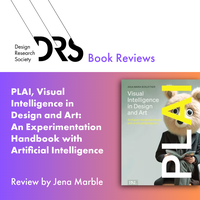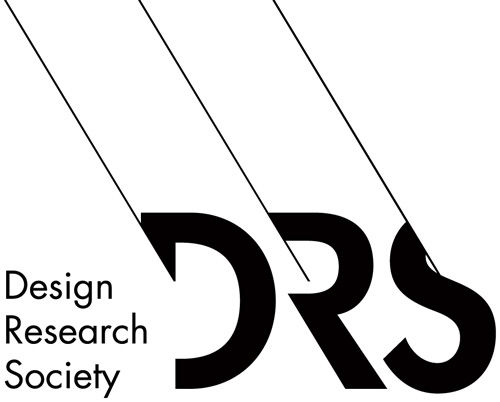
Book Details
PLAI, Visual Intelligence in Design and Art:
An Experimentation Handbook with Artificial Intelligence
Anja Maria Boxleitner
BXL Books
2024
# 261 pp.,
ISBN: 978-3-9525911-7-8
Anja Maria Boxleitner's PLAI, Visual Intelligence in Design and Art: An Experimentation Handbook with Artificial Intelligence opens with an introduction that quite literally changes your perspective. With sideways type-set pages that demand a physical reorientation, the book immediately establishes its experimental approach to understanding the relationship between generative AI (GenAI) and creative practice.
Boxleitner—a designer, researcher, and author specializing in the intersection of design, perception psychology, and artificial intelligence—brings nearly 20 years of experience to this work. As the founder of BXL, a Swiss interdisciplinary design studio and publishing house, she combines creative storytelling with strategic branding and design research, offering readers a unique vantage point from both industry and academic perspectives.
The book's structure unfolds across four distinct chapters and 261 pages. Following an introduction that takes us "under the hood” of artificial intelligence, the chapters progress through: (1) Seeing and understanding images, (2) Visual, thematic and conceptual coherence, (3) Transformation and visual creativity, and (4) Synthesis and imitation of visual styles. Each chapter examines how designers can use AI to interpret, create, and transform visual information through purposefully designed experiments.
These experiments form the backbone of the book. In each chapter, Boxleitner challenges GenAI tools—primarily DALL-E 2, DALL-E 3, and ChatGPT—to perform various creative tasks, documenting both the process and results with a methodology that includes clear descriptions of prompts, outputs, and critical analysis of successes and failures. Throughout these experiments, Boxleitner builds a compelling case for her central argument: while GenAI systems can recognize and vary patterns, they lack the fundamental "seeing" and "sense-making" that characterize human creativity. She also offers a reassuring message for creatives navigating uncertain technological terrain: "The machine is not the master here, but a tool through which new forms of beauty and meaning could emerge." This perspective isn't presented to diminish AI's potential, but rather to help readers understand its proper place in the creative process while asserting the continued importance of human ingenuity.
Boxleitner's investigations reveal interesting insights. In Chapter 1, she tests how generative AI processes and interprets pareidolia images—visual patterns that humans perceive as familiar objects, like faces in clouds or animals in random textures—concluding that while these tools demonstrate remarkable capabilities in image replication and creation, they lack genuine visual intelligence. The second chapter challenges AI to develop a coherent artistic style mimicking human expression, specifically using the prompt "Riding on a horse in the style of Cy Twombly." The resulting images have a convincing quality, which underscores AI's ability to vary existing patterns and create works that seem to mimic human creativity.
Chapter 3 explores AI's potential in fashion design by transforming a jacket into a dress through carefully curated prompts. The fourth chapter tests whether generative AI can capture and creatively translate the nuances of the Swiss fashion brand Akris. In both cases, Boxleitner finds that while AI can be integrated into the design process, it requires a versatile approach and precise prompt refinement.
What makes this book valuable is its balanced assessment. Boxleitner acknowledges AI's strengths without overstating them and identifies limitations without dismissing the technology. The step-by-step methods for each experiment, complete with specific prompts and outcomes, makes the book accessible to educators and practitioners who might be new to these tools.
The author's tone strikes a balance between scholarly analysis and practical guidance. She avoids technical jargon while still providing substantive insights, making the content approachable for readers across design disciplines. The book maintains an optimistic perspective, positioning GenAI as "a complementary force, expanding the horizons of what is creatively possible when harnessed in collaboration with human imagination and expertise."
This optimism is likely welcome amid ongoing uncertainty about emerging technologies. For design educators and practitioners across various disciplines—graphic design, interior design, fashion design—this book offers a valuable introduction to generative AI tools. It provides a realistic assessment of both strengths and limitations, which is crucial when first engaging with these technologies.
What might have strengthened the book is more intentional space for reader reflection. While the experiments offer interesting perspectives into GenAI's possibilities and limitations, the author could have more explicitly guided readers through the issues their own experimentation might raise. Questions like "Should we be using an artist's specific style in these prompts?" or "What conversations can we have about the lack of emotion and 'seeing' that sets human creativity apart?" would have added valuable depth to an already informative text. Likewise, the book would benefit from more robust ethical considerations. While it touches on how AI models are trained on massive datasets, there is little acknowledgment of the ongoing concerns about the legality of these training sets, issues of attribution, or the potential reinforcement of Western design paradigms at the expense of other cultural perspectives. These ethical considerations are especially important in educational contexts where these experiments might be replicated.
Nevertheless, this handbook succeeds in its primary goal: providing a practical entry point for creative professionals looking to experiment with generative AI. Its pragmatic approach, showing what technologies and specific prompts are used, makes it an accessible guide for beginners while still offering insights valuable to those with more experience. As we continue to navigate this terrain, expand our capabilities, and play with new creative tools, Boxleitner's provides a helpful roadmap for the journey ahead.
Jena Marble is a graphic designer, art director, and Clinical Assistant Professor of Graphic Design at University of Illinois Urbana-Champaign. Her research focuses on artificial intelligence and graphic design, exploring how AI can reshape creative processes and transform the future of the design industry.
